Millions in Caribbean left without power and water in wake of Cat 3 Hurricane Fiona
On the fifth anniversary of Hurricane Maria, a devastating killer storm that left still-unhealed scars, Puerto Ricans awoke Tuesday to a fresh scene of ruin from Hurricane Fiona.
As the stories of rescues, damages and survival continue to trickle out, the initial numbers from Fiona were staggering: 1.5 million left without power, 25 inches of rain in multiple spots. Rio Guanajibo, in the southwest corner of the island, rose 18 feet overnight Sunday. There were three confirmed deaths, and another in the Dominican Republic.
Puerto Rico Gov. Pedro Pierluisi said in a press conference Tuesday that he’s asking President Joe Biden for a major disaster declaration for the island.
“This has been hard,” he said. “There are heavy damages and we are still evaluating their extent on the island to make sure we can attend to all the needs of our people.”
Puerto Rico wasn’t the only island nation reeling from Fiona. Nearly a million people lost running water in the nearby Dominican Republic, and thousands there were displaced and remain without electricity.
Overnight, Hurricane Fiona hit the warm waters north of Hispaniola and strengthened to a major Category 3 storm with 115 mph winds before beginning its assault on the Turks and Caicos, where no serious injuries or casualties have yet been reported.
By late Tuesday, Fiona is expected to continue to power up as it heads north, toward Bermuda. In its wake, Caribbean residents are left struggling to put together the pieces — once more.
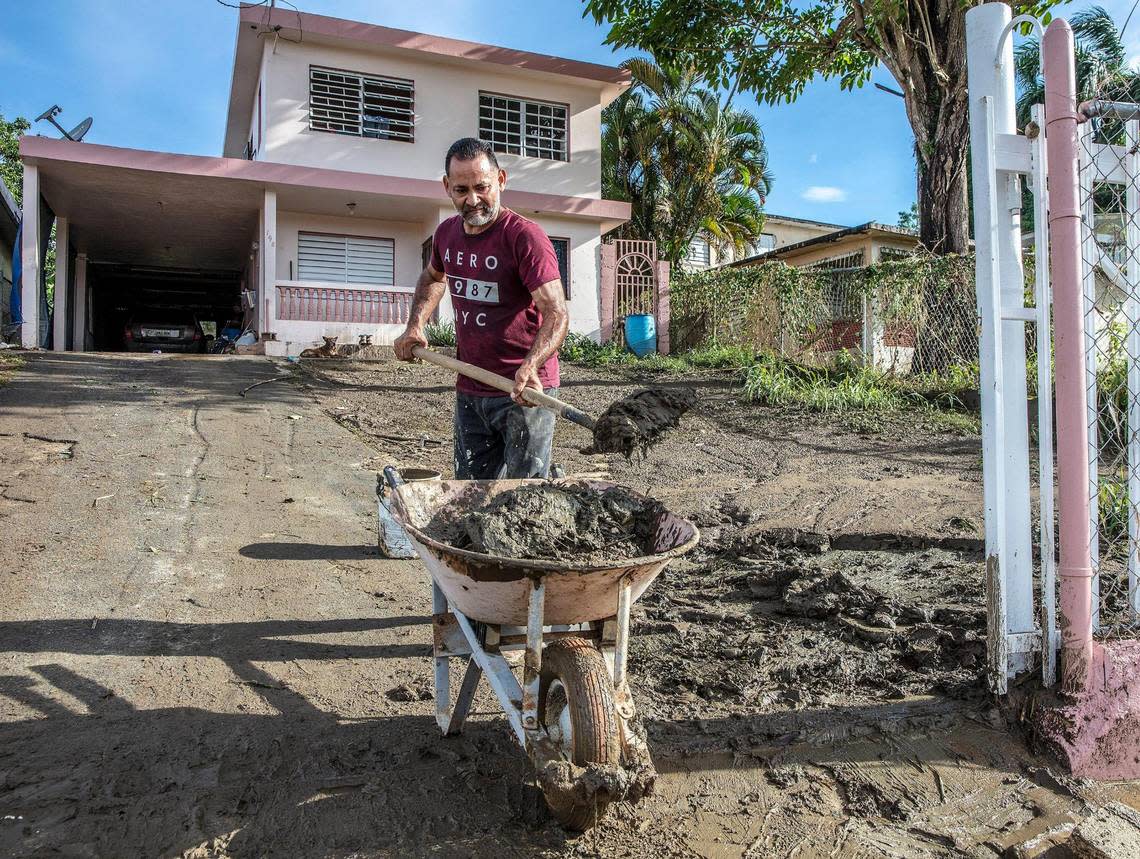
No power, no water
Pierluisi told the press Tuesday that 60% of Puerto Ricans still don’t have running water and more than a million are still without power. Some mountain communities have been completely cut off after mudslides. About 1,200 people were still in government shelters.
Some of the heavy impacts came to towns that had never flooded before and that had never had their access roads blocked, he added.
The river roared into their homes: A town in Puerto Rico struggles after Hurricane Fiona
Fiona brought an average of 10 to 16 inches of rain to the island, pouring more than 25 inches over the most affected areas.
“We were under tropical storm or hurricane conditions for almost 48 hours, with winds of over 100 miles per hour in the south-central, southeastern and the mountain regions,” he said. “Damages caused by rain have been catastrophic, specifically in the center, south and southeast of the island,” he said.
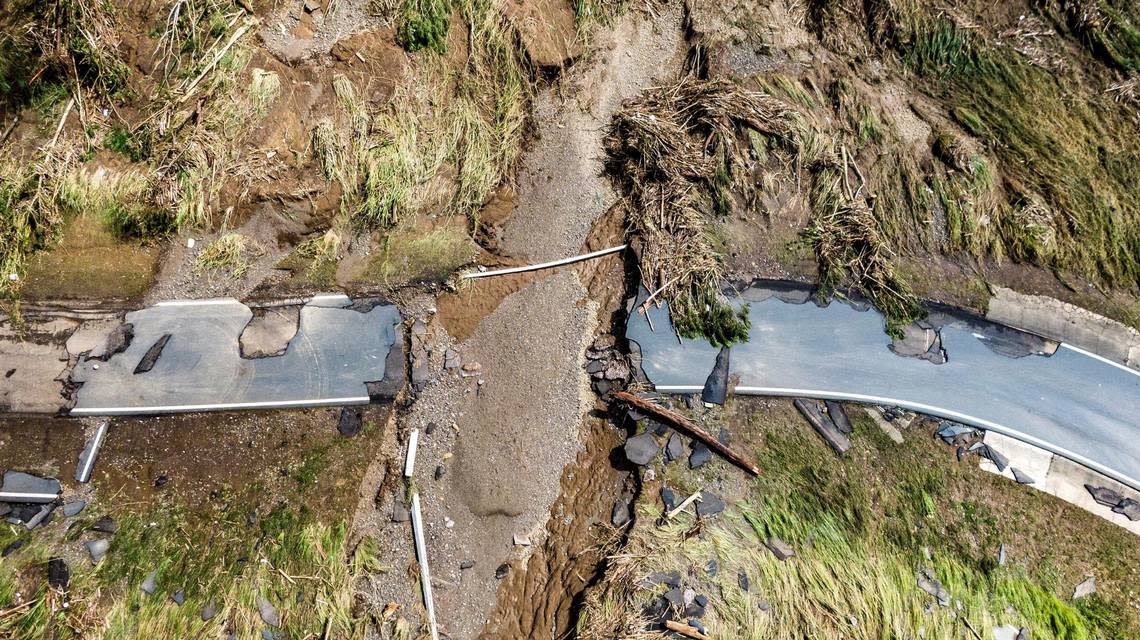
Island officials said they were working hard to reestablish the electric services, sending helicopters to inspect the grid to detect trouble spots. Residents posted videos on social media of the miles-long wait at gas stations to refuel, or gas stations already sucked dry.
Most of the damages to the island were caused by heavy rains and Pierluisi warned they could continue Tuesday even though Fiona’s center was already nearing the Turks and Caicos Islands.
“There are still areas of the island that will receive a considerable amount of rain, and that is why we are still under a first response mode and that is why it is also important for our population to keep watch for severe weather conditions and possible flooding,” he said.
In the community of Yabucoa, officials needed an earth-moving machine to rescue 60 people trapped by floodwaters that submerged their homes in four feet of water. One of those rescued was Ramona Maldonado Ortiz.
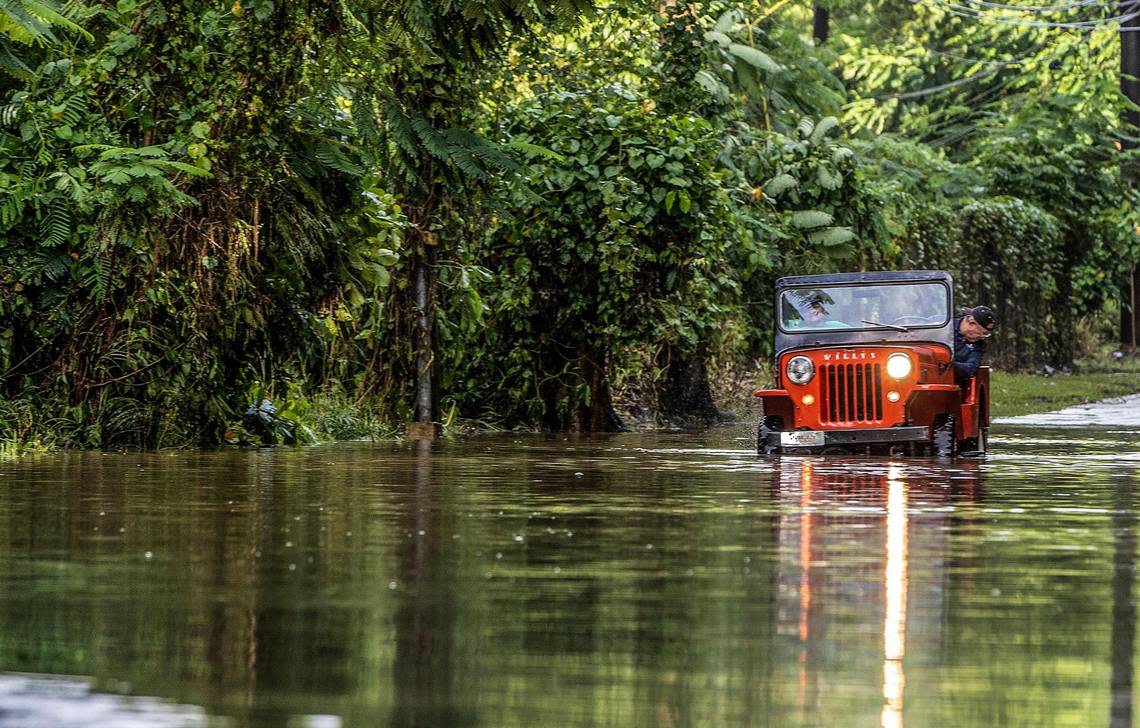
The 70-year-old woman used sheets of metal and wood as fortifications against the rising floodwaters, but Fiona broke through with ease, the flood surrounding her up to her waist.
“Everything, everything flooded,” Ortiz said.
She was pulled to safety with the digger machine. Her husband, José, who slipped and fractured a leg the day before Fiona razed Puerto Rico, had to practically be carried over the shoulder.
The Ortiz family had experienced flooding before. But they said this was different.
“This is the fourth time for me, but this is the worst,” said Maldonado. “Everyone is saying this was the worst.”
Help from D.C.
Gov. Pierluisi told reporters he planned to formally ask President Biden to declare a major disaster in Puerto Rico on Tuesday.
“Yesterday I told the president in advance of our intention when we spoke by phone and he promised to give expedited attention to our request,” Pierluisi told reporters.
The declaration is needed to activate the FEMA help provisions of public assistance to reestablish public services and to provide direct assistance to individuals.
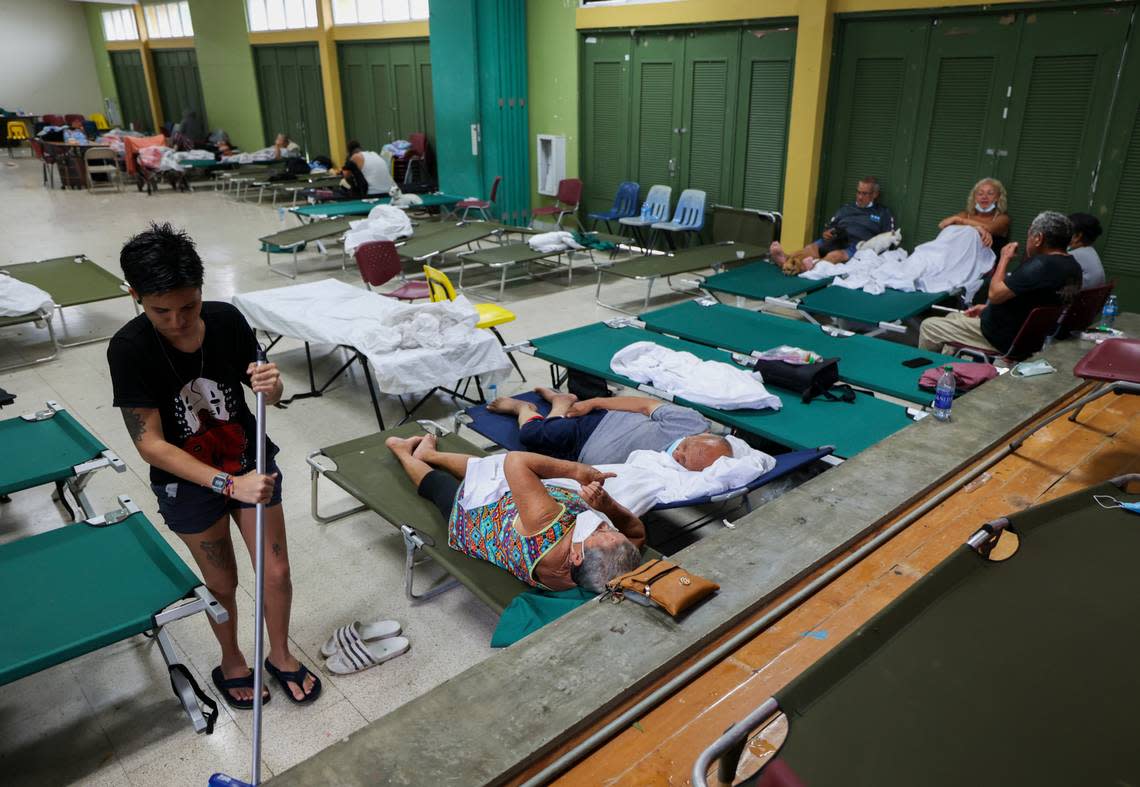
White House Press Secretary Karine Jean-Pierre pledged help for Puerto Rico at the White House briefing Tuesday, saying the president was prioritizing infrastructure improvements. She noted that full power restoration would take at least several days. That may be optimistic.
“We’re going to help Puerto Rico in the best way that we can. We’re going to continue to be in touch with them and see how we can get them into a better place as it relates to their infrastructure,” Jean-Pierre said.
Keith Turi, FEMA’s assistant administrator for recovery, told reporters on a call Tuesday that the agency has a “robust stock” of generators, adding that the U.S. Army Corps of Engineers is assessing what key facilities on the island might need them amid the widespread power outages.
“We see no shortfalls in terms of resources for generators at this time,” Turi said.
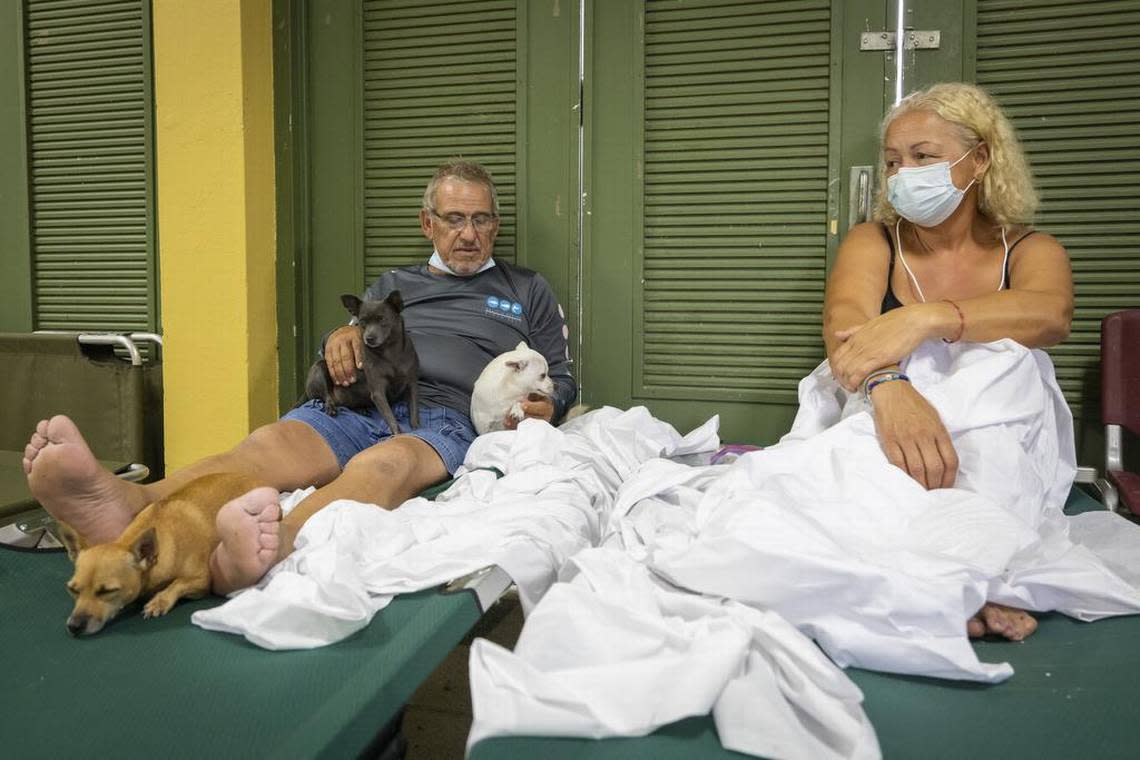
The FEMA official also defended the agency’s and local officials’ response to the storm, arguing that the loss of electricity is common in the immediate aftermath of a hurricane. The agency and government officials are working hand in hand to help Puerto Rico overcome the storm, he said, and both are in a better position to aid the island’s recovery efforts now than they were in 2017, after Hurricane Maria.
“There is really not a standard of how long you expect power to be out,” Turi said. “Each individual circumstances are different. But we’re still in the early days of the response.”
Hispaniola assesses damage
Across the Mona Passage in the Dominican Republic, a mirrored effort to understand the scope of the disaster was underway.
More than 12,400 Dominicans were displaced by Fiona, which whipped the island with 90 mph winds most of Monday and knocked out power for most of the nation. Electric company Distribuidora del Este said 61% of the system was affected.
Running water was also an issue, since Dominican officials reported that the storm destroyed nearly 60 aqueducts, leaving close to a million people without water.
Floodwaters from Fiona’s rains continued to block main highways and isolated at least two communities.
Destroyed homes and communities without power: Dominicans pick up after Hurricane Fiona
Haiti dodged much of Fiona’s wrath, as expected. Scattered rain fell on the northern region with no damages reported so far, said Jerry Chandler, the head of the Office of Civil Protection.
Chandler, however, was also keeping a close eye on the tropical disturbance to the south. Some early storm models show it cruising south of the country this weekend, but the National Hurricane Center has yet to designate the disturbance or chart a projected path for it.
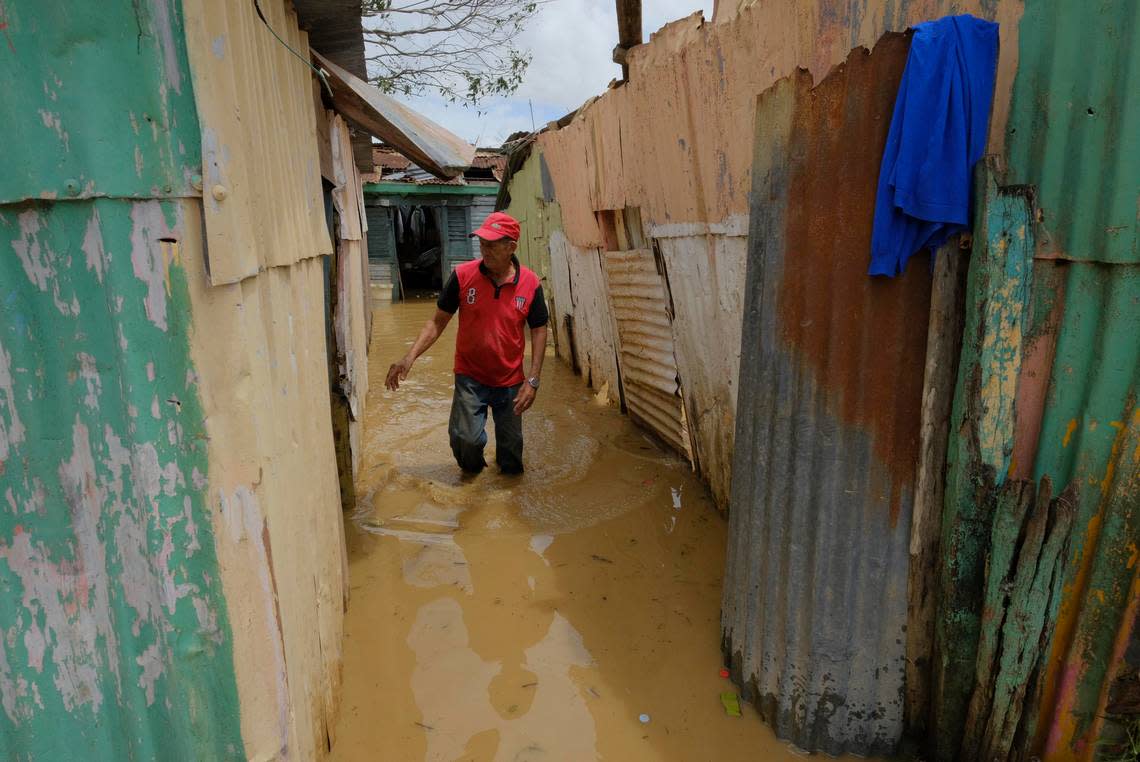
Haiti’s National Risk and Disaster Management System on Tuesday afternoon officially lifted the yellow alert that was on the country during the passage of Hurricane Fiona.
However, the Office of Civil Protection asked residents to remain vigilant because rains could continue falling through Wednesday.
Haiti has been rocked by turmoil for over a week now and as Hurricane Fiona morphed into a powerful storm, lashing the Dominican Republic, looters in Haiti hit another emergency response warehouse with pre-positioned hurricane supplies — one of at least half a dozen government and charity-run warehouses looted this week. The Office of Civil Protection warehouse in the southern city of Les Cayes became the latest warehouse to be looted.
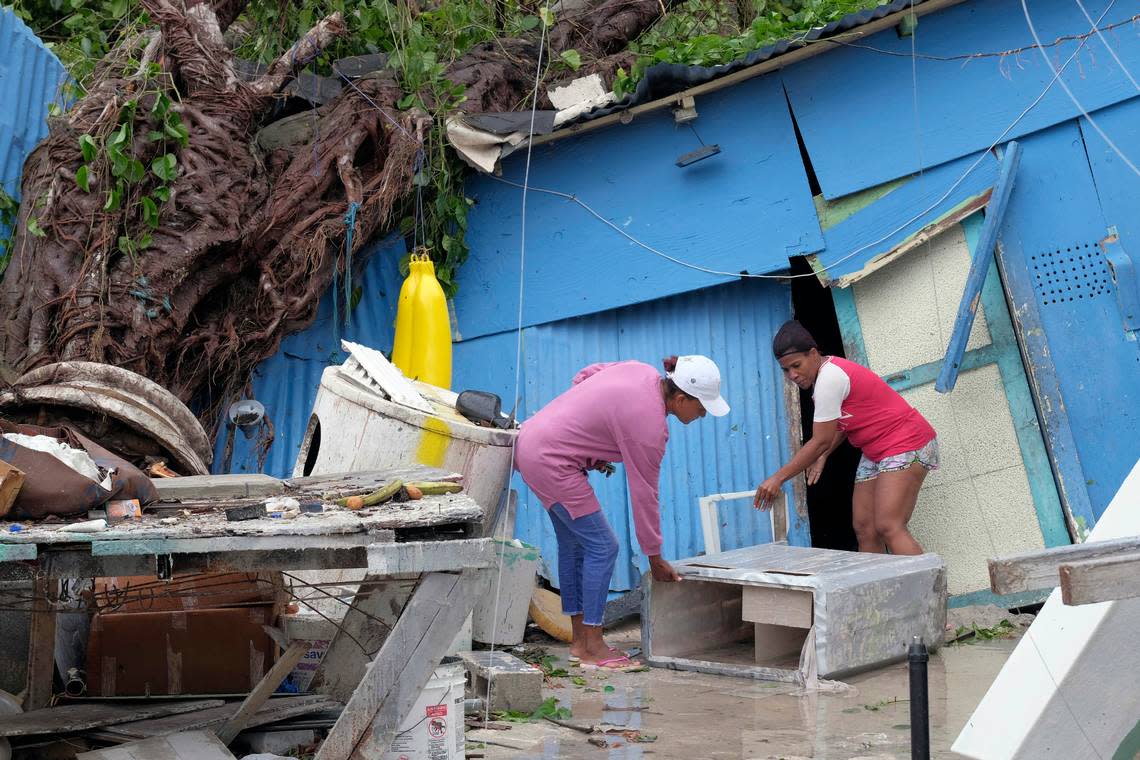
Turks and Caicos, Bahamas
Hurricane Fiona spent much of Monday night and Tuesday morning slashing Turks and Caicos with 115 mph winds and heavy rains but Deputy Gov. Anya Williams said Tuesday morning that no casualties or serious injuries had yet been reported. There were about 165 people in shelters across the island chain.
However, there are island-wide power outages on the eastern islands of Salt Cay, South Caicos and Grand Turk, the capital, as well as on North and Middle Caicos, while 30% of the island of Providenciales is currently without power, Williams said.
Video Footage of current weather conditions at the EOC in Grand Turk! Remember to stay indoors until the All Clear is given. You can use the DDME ALERT App, Eyewitness report feature to report hazards and building damage from Hurricane Fiona from the safety of your home. #TCI pic.twitter.com/fT1fmUQDiF
— DDME.TCI (@DDMETCI) September 20, 2022
“We are closely monitoring the impact and preparing for the service restoration process after the weather system has passed and the all-clear has been given,” power company Fortis Ltd. said in a statement.
Cellular service was also out in South Caicos, where landlines have not been functioning since the last storm five years ago. Residents in the area have also reported losing their roofs to Fiona’s Category 3 winds.
Temard Butterfield, who lives on the island of Grand Turk, said residents spent “about an hour directly in the eye of the hurricane. A lot of rain and wind.”
As Fiona battered the low-lying island, Butterfield described it like “a non-stop train on the outside in the middle of thunder and lightning.”
Butterfield, a vice principal of a primary school and a former member of Parliament for the Turks and Caicos, said by Tuesday afternoon the eye was on the outskirts of North and Middle Caicos, leaving Grand Turk with minimal damages and some flooding.
“For the most part everyone is ok on the Island of Grand Turk,” he said.
No serious casualties or injuries by Hurricane Fiona reported in Turks and Caicos
The National Emergency Operations Center in Turks and Caicos says it has been in contact with the Bahamas Met Office, which advises them that the weather conditions in the island chain “remain unstable with intermittent gusts of heavy winds and rains still being experienced.”
“This is expected to continue for the next six to eight hours. Therefore, despite the perceived improvements to weather conditions, the all-clear will not be issued at this time,” they said.
Residents were asked to remain indoors on all islands because it still wasn’t safe to travel on roadways.
In Mayaguana, a small, lightly populated Bahamian island in Fiona’s path, Bahamian officials planned a rescue to evacuate 22 residents with health risks an hour before winds were expected to pick up, Captain Stephen Russell of NEMA confirmed to the Miami Herald. Only 11 people were convinced to leave the island.
McClatchy Staff Writers Micheal Wilner and Alex Roarty contributed to this report.
